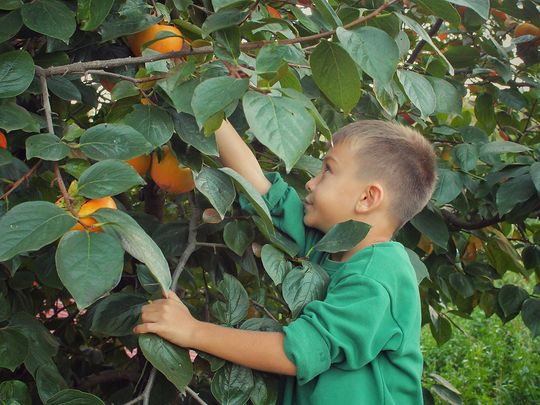
If you point at a tree and ask your child how many leaves they think are on the tree, you’re likely to get a number that’s anywhere between one and a ‘bazillion’.
Click start to play today’s Spell It, where we help kids ‘lock’ in much closer estimates.
When it comes to estimating something, it involves much more than guesswork. According to a September 2022 report in National Geographic, it’s a conclusion you reach after a methodical thought process using facts and information that’s available to you.
For children, the skill of estimation is a huge brain booster. It helps them exercise their critical thinking, imagination, visualisation, organisation and communication. It’s also a great way to introduce maths to young children – even toddlers. A May 2013 study published in the journal Frontiers in Psychology found that preschool kids who were unable to estimate the number of objects in a group were more likely to experience difficulties in understanding maths at a later age.
So, just how does one teach the elusive science of estimation? Here are a few strategies that parents can use with their kids, according to the National Geographic report:
1. Counting leaves
When you ask a child to analyse how many leaves there are on a tree, you’re getting them to improve their counting and multiplication skills. Forestry researchers analyse this by measuring the area beneath the crown of a tree, or counting fallen leaves and using that number to estimate the percentage of remaining leaves. Here’s how you can guide a child to get a better estimate:
- Help them count the number of leaves on one tree twig.
- Get them to find a branch and count how many twigs it has.
- Ask them to count the number of branches on the tree.
- Now, it’s time to multiply. Multiply the number of leaves on the twig by the number of twigs on the branch, then multiply that number by the branches on the tree.
2. Counting jelly beans in a jar
This popular counting game involves counting and multiplication skills, when done right. One way to make an estimation is:
- Ask your child to look at the underside of the jar – how many jelly beans are on the bottom?
- Next, have them count the number of layers of jelly beans in the jar.
- Multiply those two numbers to get an estimation. If the jar isn’t a cylinder, you can even add a few more jellybeans for a more accurate result.
3. Estimating sunset
If you’re hiking or camping with your child, there’s a quick way of figuring out what time the sun will set – without any clocks or the help of the internet.
- First, on a clear afternoon, find a view of the horizon that’s unobstructed by trees or buildings.
- Hold your arm out, with your palm turned towards your face, and your pinkie resting on the horizon line. Ask your child to help keep your arm steady.
- Next, stack one hand above the other until they reach the sun (keep thumbs tucked in).
- If you need more than two hands, carefully remove your bottom hand and move it to the top while keeping the other steady.
- Each hand represents an hour and each finger is about 15 minutes. So, if you’re holding up two hands and two fingers, it means the sun will set in two hours and 30 minutes.
What do you think of these strategies for estimation? Play today’s Spell It and let us know at games@gulfnews.com.




